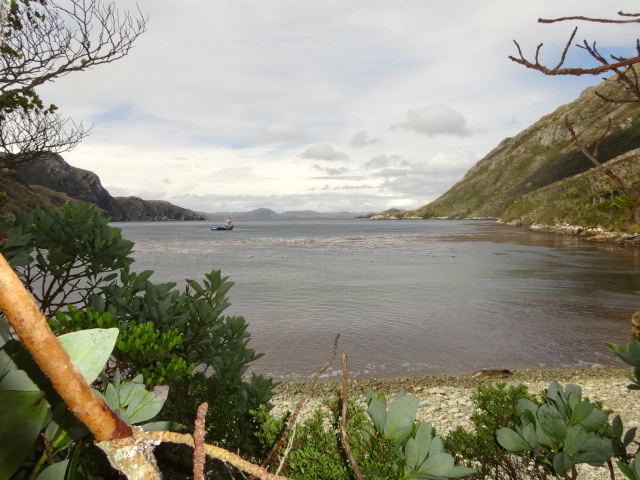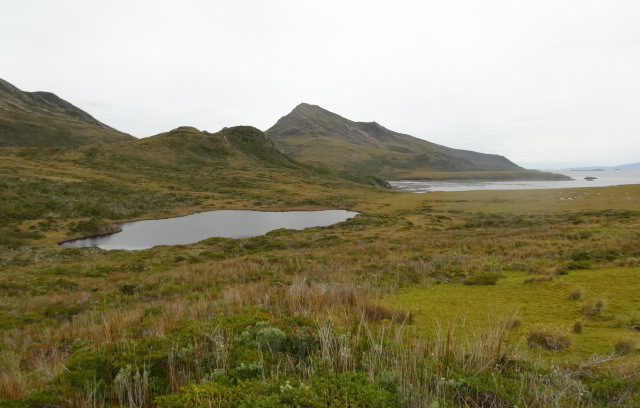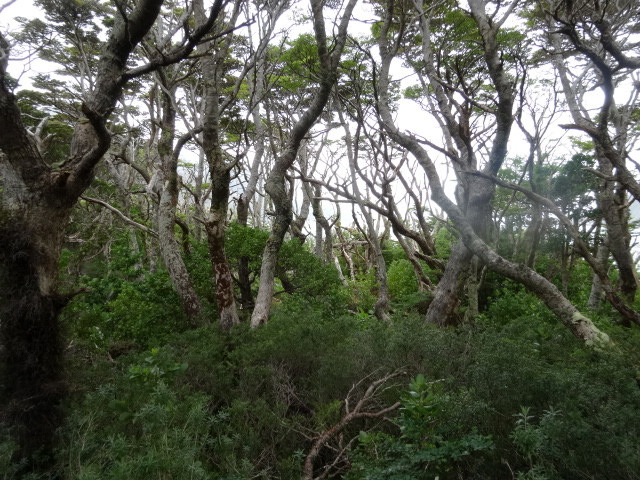From the Field: Bill Buck in Cape Horn 2014, Part 8
Posted in Travelogue on April 11, 2014 by Bill Buck
William R. Buck, Ph.D., is the Mary Flagler Cary Curator of Botany at The New York Botanical Garden. Every January for the last three years, Dr. Buck, a moss specialist, and a team of colleagues have journeyed to the Cape Horn region at the southern tip of South America to document the area’s rich diversity of mosses and search for new species.
January 19, 2014; Caleta Saint Martin, Isla Hermite, Chile (55°51.5’S, 67°34’W)

Yesterday evening, as we navigated along the Beagle Channel, the clear southeastern sky gave me hope that we would reach our target area unhindered. The engines started at 4 a.m., and everyone hurried to use the bathroom, having been warned of rough seas. However, my Pollyanna premonition seems to have been correct as we never saw bad waves.
We were scheduled to reach our safe harbor at Isla Grevy by 8 a.m. Stepping out onto the deck, I found islands all around us, and relatively calm waters meant we were bypassing Isla Grevy and heading straight to Isla Hermite, one of our main targets. I could have jumped up and down in delight! It would be some time yet until we arrived, but after waiting weeks to reach this island, what was another few hours?
I rushed to spread the good news to the rest of the group, still in their bunks. Everyone was excited by the prospect. By mid-morning we were up and about, marveling at the scenery and anxious to reach our collecting area. We arrived in Caleta Saint Martin at 11 a.m., a spot where J.D. Hooker had spent a month trapped by bad weather during the Erebus and Terror expedition in the 1840s. I asked the cook to make a quick lunch so we could be in the field by noon.

The youngest members of the group wanted a full six hours in the field to reach higher elevations. I headed to a forest of Nothofagus antarctica on either side of a small stream. Right away, it was obvious this site was special, as the forest floor was carpeted with bryophytes (mosses and related species) and filmy ferns. A forest dominated by N. antarctica is quite different from the N. betuloides forests we’d seen until now. Our little avian friend, the rayodito, chirped in welcome.
The bryophytes, dominated by liverworts, were rich; the lichens were no less diverse. I even found a number of fungi growing on lichens that I hadn’t seen previously and took a second collection of a fungus that grows on bryophytes, especially species in the genus Radula. If this doesn’t already have a name, I’m hoping I can convince Peter Döbbeler to describe it.
My three hours in the field were over before I knew it. In that time, I made more collections than at any previous site on the trip. Returning to the ship, I got my specimens processed and on the dryer before the high-altitude group returned, then arranged an early dinner to be served shortly after everyone was back on board.

We can’t stay here tonight because of the winds. I asked about another Hermite stop after dinner but was told we would need to move straight to our anchorage off Isla Wollaston. We may be able to collect there if light is adequate. Now that we are firmly within our target area, all is right with the world. Everyone is excited to be here, especially Barbara Murray, who’s dreamed of visiting this area for more than 20 years because it has so many species of Andreaea (the lantern mosses, her specialty). It’s great to be able to help fulfill such a dream.
We only have about a week in these southern islands, rather than the two we had planned, but that’s far better than not getting here at all. We hope to have a second day on Isla Hermite, a day on Isla Deceit, two days on Isla Wollaston, and a day on Isla Grevy. The captain says it’s a reasonable schedule, but of course that all depends on the weather.
Past Expedition Entries:
Photos provided by Barbara Andreas.

